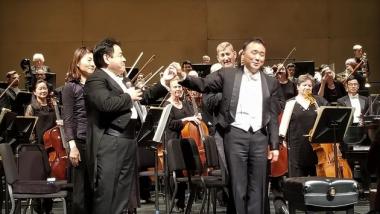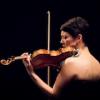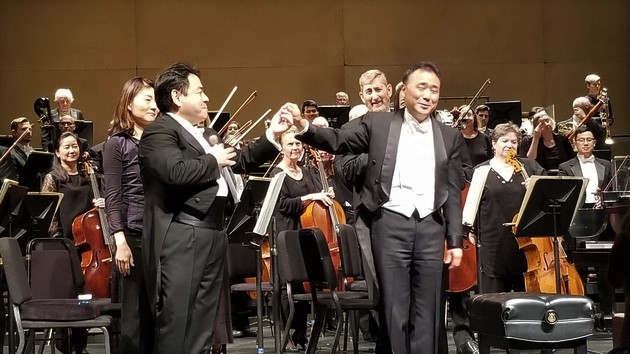
Conductor Tatsuya Shimono made one of his welcome return visits to Symphony Silicon Valley on Saturday to lead the orchestra through a brilliantly fresh and clear rendition of Stravinsky’s Petrushka. More than The Firebird or even The Rite of Spring, this ballet of grotesque puppetry is the foundation stone, the work in which Stravinsky first really figured out how to sound like Stravinsky. The orchestra displayed the music’s tangy angularity in all its bold fervor.
Every bizarre instrumental combination that Stravinsky comes up with — and he’s got a new one every fifteen seconds or so for over half an hour — was precisely rendered and compelling, both rhythmically and melodically. The communication between families of instruments was particularly fine, especially when bringing in the percussion to meld with the rest of the orchestra.
Every section of musicians was on its toes, displaying superlative skill at getting the stunning colors of sound out. Appropriately, Shimono gave each section its own acknowledgment in the curtain calls. If any individuals deserve special mention, it’s the ones with the largest individual parts, principal trumpet James F. Dooley and orchestral pianist Brenda Vahur.
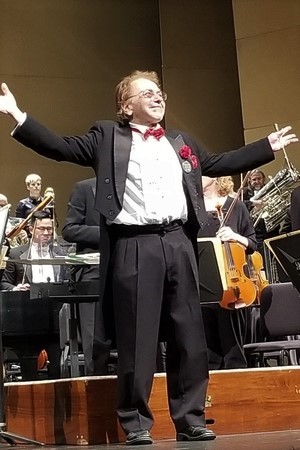
Two preliminary works fit in well with this. Stravinsky’s Circus Polka, the brief piece he composed for an elephant ballet choreographed by George Balanchine, is an exercise in typically dry and crusty 1940s Stravinsky neoclassicism, sounding like Petrushka only a little bit more so.
And at the very start of the concert, Henry Mollicone made an appearance. He’s a local composer known mostly for his operas and choral works, who used to conduct regularly at San Jose Symphony pops concerts. Symphony Silicon Valley decided he deserved a spot here, so he conducted his ballet-based tone poem Kathy’s White Knight. This colorful and attractive little piece fit the program because it was composed in the sound world that Stravinsky made possible. It features a knight who keeps falling off his horse in Stravinsky-like squeals, and it changes character frequently and abruptly.
After all this, what was the concert doing with soloist Jon Nakamatsu and Rachmaninoff’s Piano Concerto No. 2? Rachmaninoff is almost the anti-Stravinsky, though the two composers became friendly neighbors in Los Angeles in the 1940s and Rachmaninoff gave Stravinsky a jar of honey as a gift. As with Petrushka for Stravinsky, this concerto is something of a foundation stone for Rachmaninoff, the work in which he fully achieved the lush romanticism he’s known for. Nakamatsu had never played this concerto locally, so this was his chance.
The answer to the question is that Shimono and Nakamatsu refused to let this music turn lush. They produced a thrilling drama that remained taut and urgent throughout the outer movements and was contemplative but not relaxed in the central Adagio. It became as close to Stravinsky’s universe as Rachmaninoff could get.
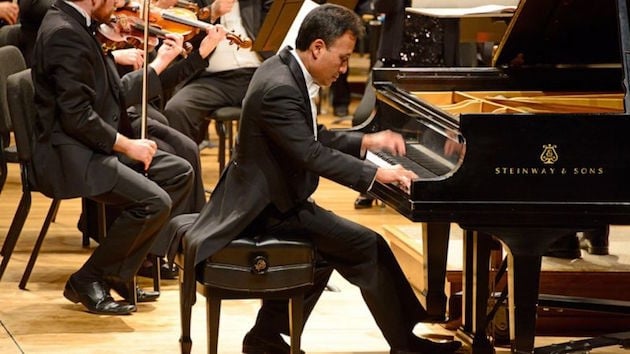
Nakamatsu’s playing was expansive, full of broken chords and a general elaboration of his part. Fortunately his piano’s sound was bold and resonant. When the orchestra takes over lyrical themes, Nakamatsu’s simultaneous pianistic rumbling could be easily heard, giving a disturbing undercurrent and thus declining to let the music mellow out. In the first movement recapitulation, his counter-theme overpowered the orchestra entirely.
Still, the orchestra could be heard and was as impressive as in Petrushka. The sound was kept light and relatively airy. Combinations like an oboe and the violas in one theme were fiercely colorful.
With the retirement of violist Janet Sims, SSV needs a new preconcert lecturer. Saturday was the first appearance in that role of long-time violinist Randall Weiss, who turns out to be a man of dry wit, making great humor out of Balanchine’s account of his phone call commissioning Stravinsky to write for elephants. Interviewing Nakamatsu, who said that Rachmaninoff’s Second is a more tiring concerto to play than his Third, Weiss replied, “Don’t be too tired to play an encore.”
Nakamatsu wasn’t. He proved his fingers were still flexible after all that work by blazing through the outer sections of Chopin’s Fantaisie-Impromptu at the speed of the Minute Waltz.

